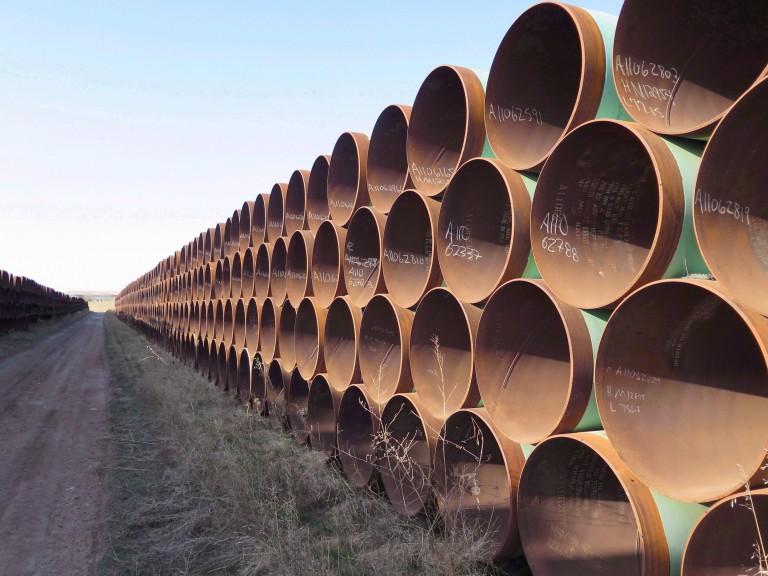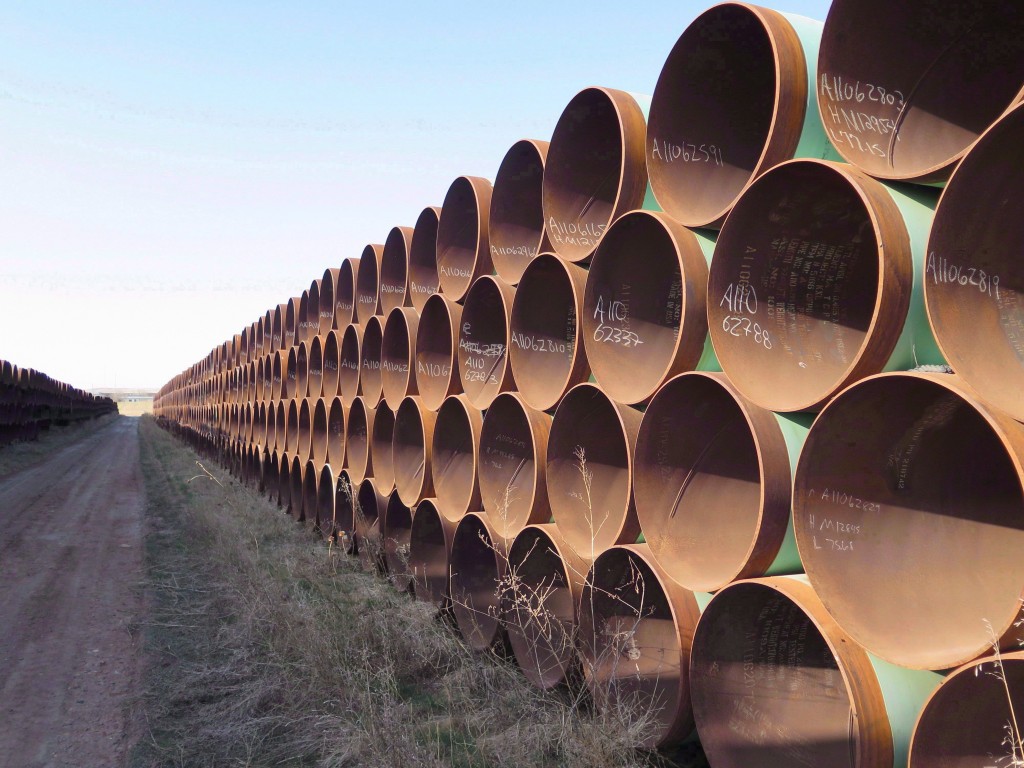If Trump approves Keystone XL, does Canada need other pipelines?
Canada has some big decisions to make, and Donald Trump’s administration will play a significant role

A yard in Gascoyne, ND., which has hundreds of kilometres of pipes stacked inside it that are supposed to go into the Keystone XL pipeline, is shown on Wednesday April 22, 2015. (Alex Panetta/CP)
Share

Jason Markusoff is working to provide answers to some of the most burning questions in the wake of Donald Trump’s historic win to become president-elect of the United States. Read more of his FAQs here.
The 830,000-barrel-a-day pipeline from Alberta to the United States had largely been written out of the oil industry’s calculus after President Barack Obama rejected the project last November. Focus had shifted to the Trans Mountain expansion to Burnaby, B.C. (590,000 barrels a day) and Energy East (1.1 million).
But Trump and the Republican-led Congress both strongly back Keystone and can rubber-stamp it fairly quickly once he’s president in January—a month after the Trudeau cabinet’s deadline to decide on Trans Mountain.
Right now, pipeline capacity and oil production roughly match. The latest National Energy Board forecasts for increases in oil sands production through 2025 roughly add up to what Keystone and Trans Mountain could handle, says University of Calgary economist Trevor Tombe.
Consider three more factors: North Dakota oil production will take up some of the Keystone XL pipe; more pipeline room will ease the demand on oil-by-rail transport, which costs more, pollutes more and is less safe; and the federal and Alberta governments both want to diversify resource export markets, making a route to Pacific ports more enticing.
Then there’s the question of how Prime Minister Justin Trudeau reconciles adding oil sands export capacity with the need to deal with climate change. Environmental advocates have lately been arguing the numbers don’t really add up for more pipelines, based on slower growth in Asia and worldwide trends bending the curve downward on oil demand.
During the campaign, Trump proposed the, er, novel condition that Keystone builder Transcanada Corp. share a chunk of its profits with the U.S. government, which is probably more Hugo Chavez-like than Trump actually wishes to sound. Like so much of what Trump said off-script, expect that idea to be quickly discarded.
Indigenous-led protests against the Dakota Access Pipeline also suggest Keystone could face construction-site protests, as would any pipelines through First Nations land in Canada.